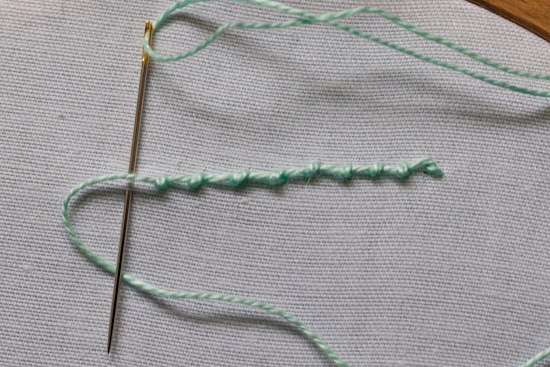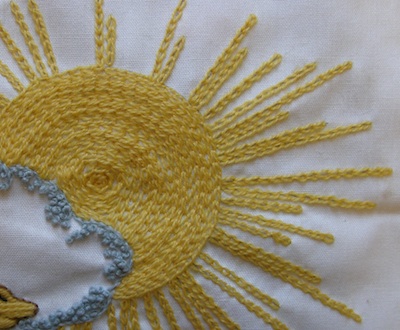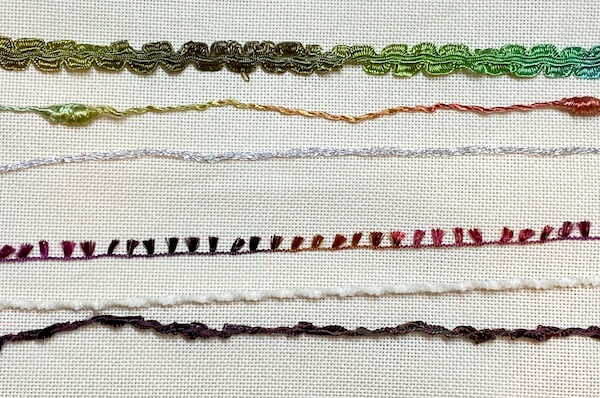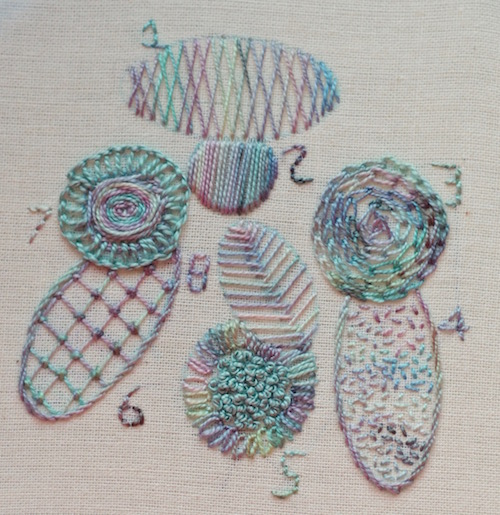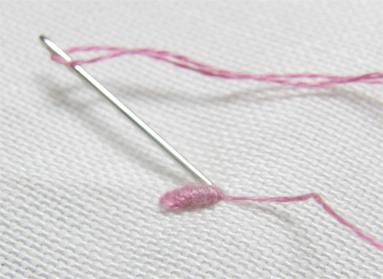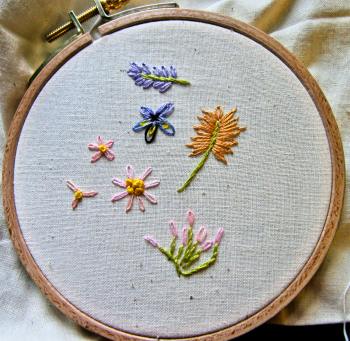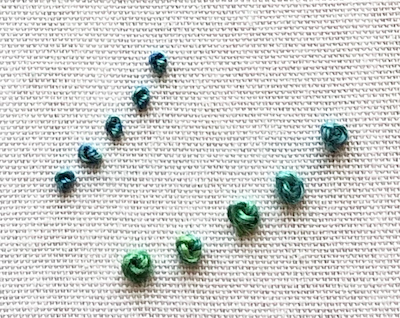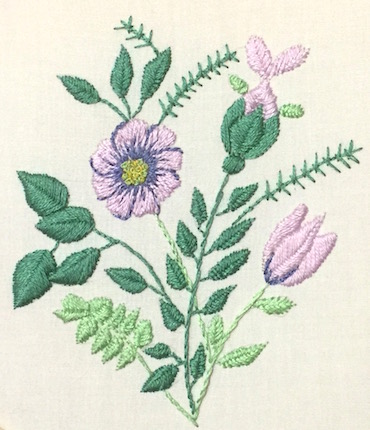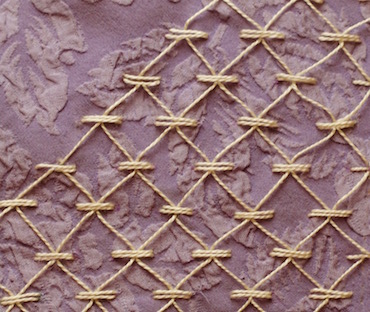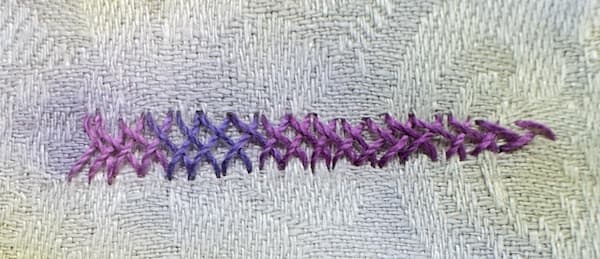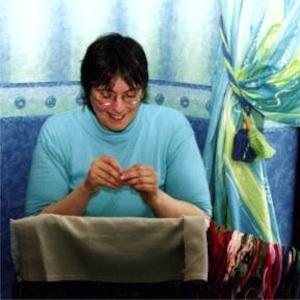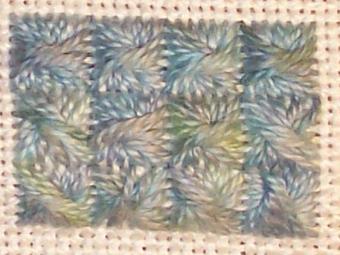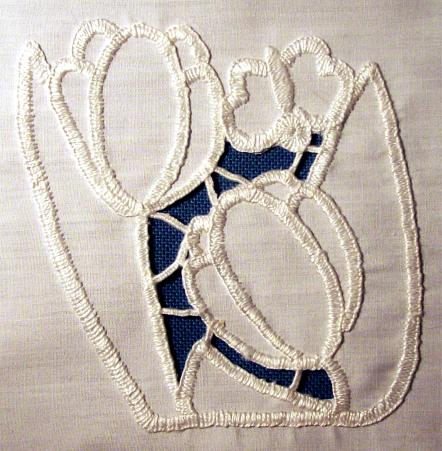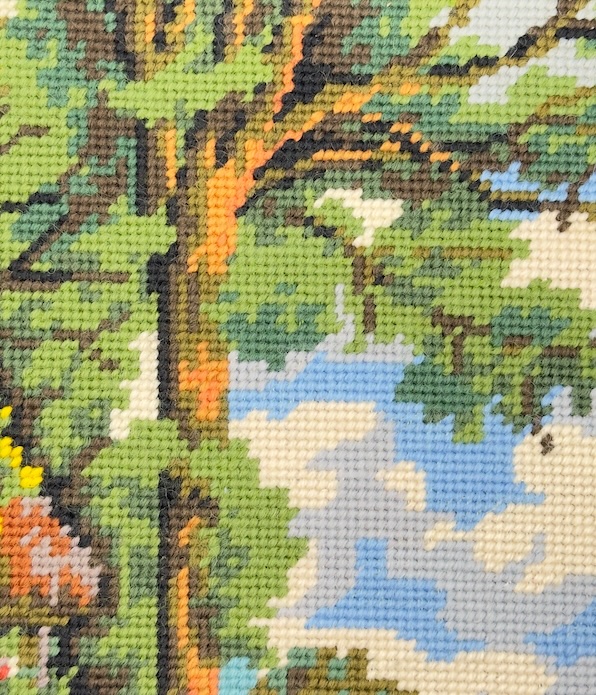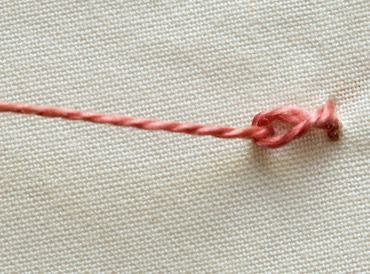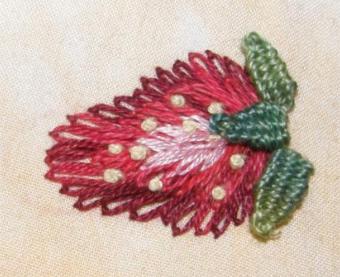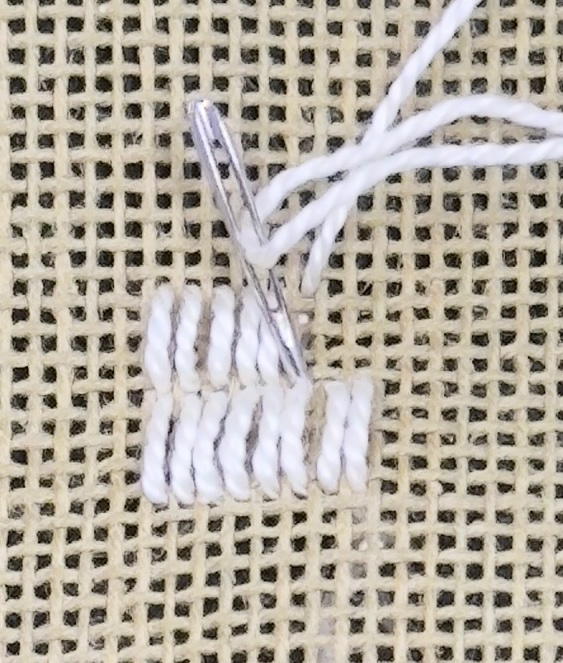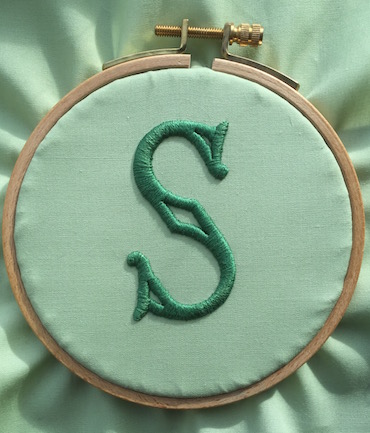- Home
- Basic embroidery stitches
- Stitch a French Knot
How to Stitch a French knot
I used to stare at my embroidery hoop in defeat, surrounded by sad, misshapen French knots that looked more like tangled fishing line than the elegant embroidery I'd imagined. Some knots were tight as pebbles, others drooped like wilted flowers. My tension was all over the place.
Everyone else made it look effortless while I was left muttering under my breath.
The real breakthrough came from an unexpected source - slowing down. Way down. Instead of racing to finish projects, I dedicated 15 minutes each evening to practicing just French knots. No pressure, no deadlines. Just doodling until something seemed to emerge from the fabric, like my little butterfly below.
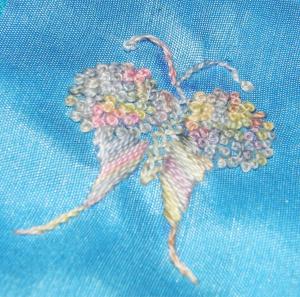 The top wings of this butterfly are worked in multiple coloured French Knots
The top wings of this butterfly are worked in multiple coloured French KnotsNow my French knots are consistent enough that other stitchers ask for advice. I can create uniform knots in varying sizes, maintain even tension, and work confidently with different thread weights.
I went from frustrated beginner to French knot enthusiast.
I know you might be looking at your own wonky knots right now, feeling discouraged. Maybe you're thinking about switching to colonial knots or avoiding knot stitches altogether and attaching beads instead. We've all been there.
With the help of this page, it’s time to defeat the knot today!
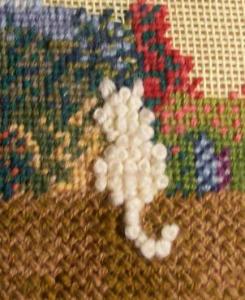 Cat worked in wonky French Knots in my early days of needlepoint
Cat worked in wonky French Knots in my early days of needlepointStep-by-Step Guide to Making a French Knot
Let’s start with the basics. Follow these steps to make a French knot that holds tight and looks just right.
I’ve used needlepoint canvas and pearl cotton in the photographs, to make it easy for you to see the process.
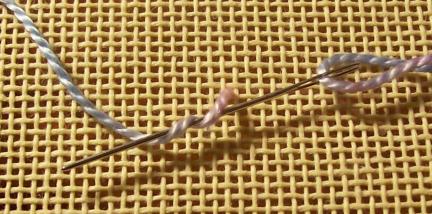
Bring the Needle Up: Begin by pulling your needle up through the fabric where you want the knot to sit.
Wrap the Thread: With your non-dominant hand, hold the thread close to the fabric. Wrap the thread once around the needle for a small knot or twice for a fuller knot.
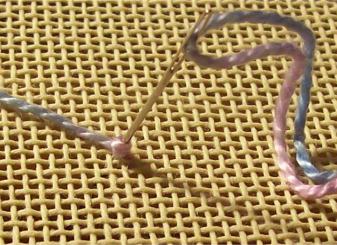
Anchor the Needle: Now, insert the needle back into the fabric, close to (but not through) the original hole. This will help keep the knot in place and prevent it from slipping.
Pull Through Slowly: Keeping the thread taut, slowly pull the needle through to the back of the fabric. This should leave a small, tight knot right where you placed it.
If you’re a visual learner, check out the video below where I show you exactly how to do French knots step-by-step—seeing each motion up close can make all the difference as you practice along.

Troubleshooting Common French Knot Issues
Even with practice, you may hit a few snags. Here are solutions to some of the most common French knot frustrations.
Knot Slipping Through Fabric
Solution: Try inserting the needle a thread or two away from where you started, rather than right back into the same hole. This small adjustment can prevent slipping.
Tangled or Twisted Thread
Solution: Use shorter thread lengths—no more than 12 inches. This minimizes tangling and gives you more control over each knot.
Knot Isn’t Tight Enough
Solution: Keep the thread taut and consistent by saying a quick “one-two, pull-through” to yourself as you wrap and pull. This simple rhythm keeps your knots uniform.
Advanced Tips for Perfecting Your French Knots
Once you’ve got the knack of working french knots use the following tips to make each knot even better.
Adjust Thread Thickness
Try using thicker threads for bigger, more pronounced knots, or finer threads for subtle, delicate ones.
Experiment with Wraps
For a more textured look, wrap the thread around the needle twice. Just be careful with tension so the knot stays tight and neat.
Optimize Your Setup
Set up your embroidery space with good lighting, a comfortable seat, and use a needle threader to keep things simple. A good setup helps you keep control and enjoy the process more.
Creative Applications for French Knots
Once you’ve got the basics down, you’ll find French knots add a lovely touch to all sorts of embroidery projects. Here are a few ideas:
Floral Embellishments: French knots make beautiful flower centres, flower buds, or even tiny flowers themselves.
Textured Backgrounds: Fill in sections with French knots in varying colours for a unique, textured slip to attach to a stumpwork embroidery piece.
Decorative Accents: Use French knots as accents for animal eyes, bunny tails, holly berries for holiday ornaments or with other stitches to decorate crazy quilt seams.
Overcoming Frustration with French Knots
It’s easy to get frustrated with French knots when they don’t look quite right. But remember, each knot is a step toward improvement.
Accept those imperfect knots at the start—they’re just part of the learning process. You’ll get there, knot by knot.
Give yourself permission to make mistakes, and focus on the progress you’re making. Each attempt is bringing you closer to achieving this useful stitch.
Each knot, even the wonky ones, teaches you something. Keep going, and soon you’ll find your rhythm and confidence growing.
Whether you're creating your first knot or perfecting your technique, remember that each time you stitch a French knot it is a unique expression of your creativity.
Keep practicing, and soon you’ll find yourself adding beautiful, intricate knots to your embroidery projects.
Be sure to check out my other embroidery tutorials to keep expanding your skills!
What have you used this stitch for?
If you've tried this stitch and would like it featured on the page to give other stitchers ideas, feel free to submit pictures and your story to the site. You could tell us about the project you were creating, what threads and colours you chose and why, whether you found it easy to do, or had difficulties learning the stitch.
If the same issue crops up multiple times I will attempt to help you overcome the problem.
What did you think of this page?
Did it give you all you needed or did anything else spring to mind? If there was something missing give me a shout – or let me know if this page proved helpful (do let me know which page you are commenting on).
Would you like a direct reply? Just pop your email address below, and I'll be in touch.
Stay connected between projects
If you’d like occasional updates from my embroidery room, including new patterns, gentle tips, and little things I think you might enjoy, you’re warmly invited to join the Stitchin’ Times newsletter.
No pressure. Just a friendly note now and then to keep you inspired.
